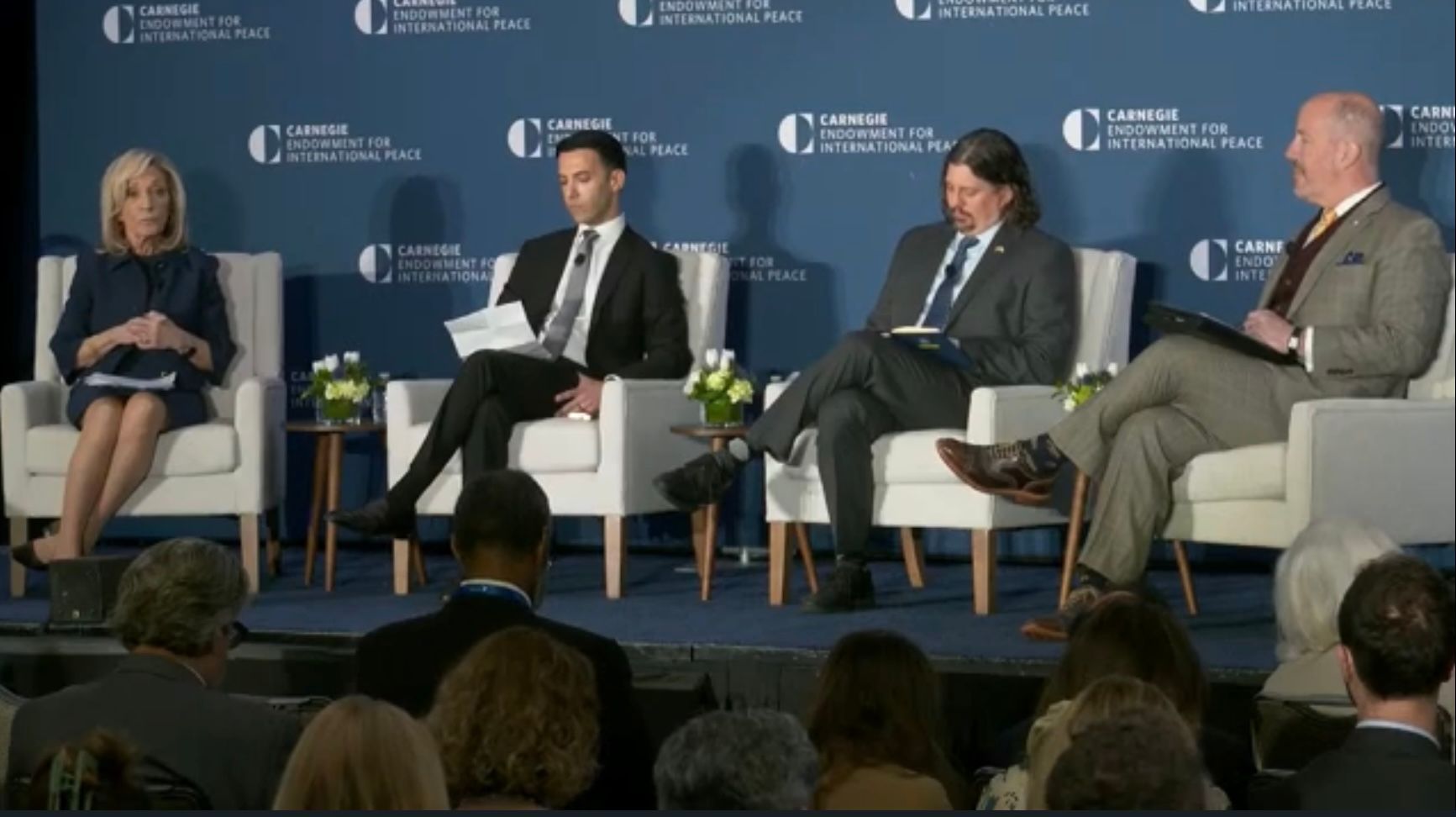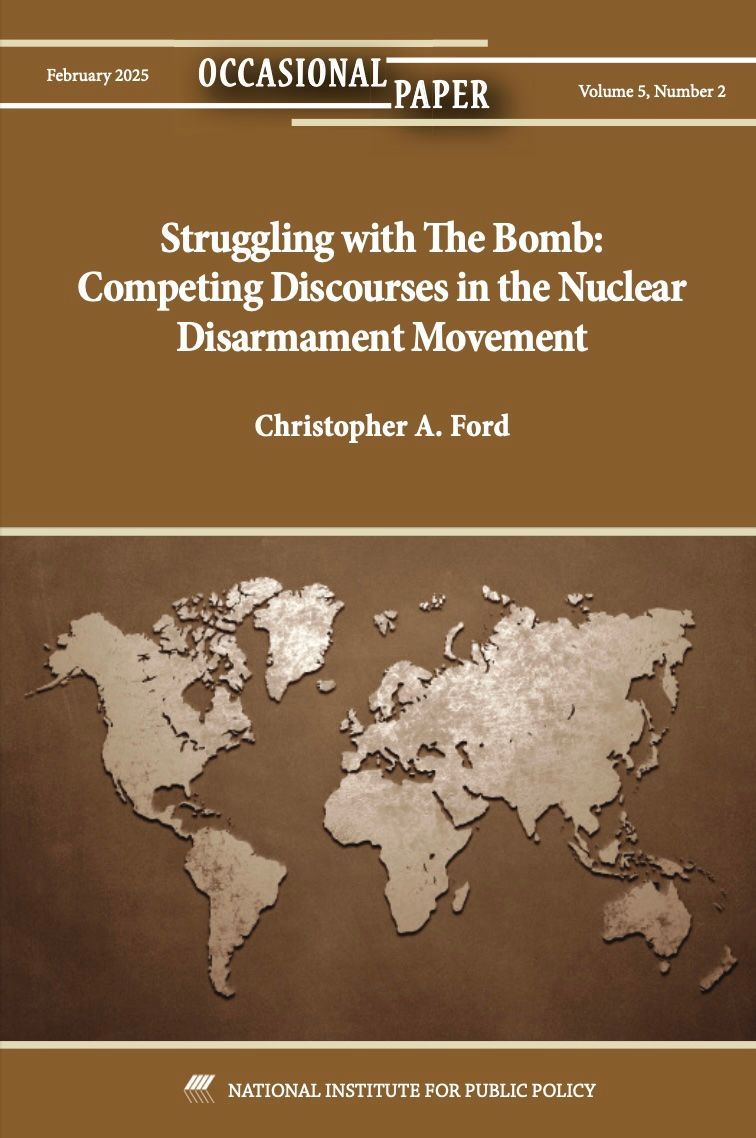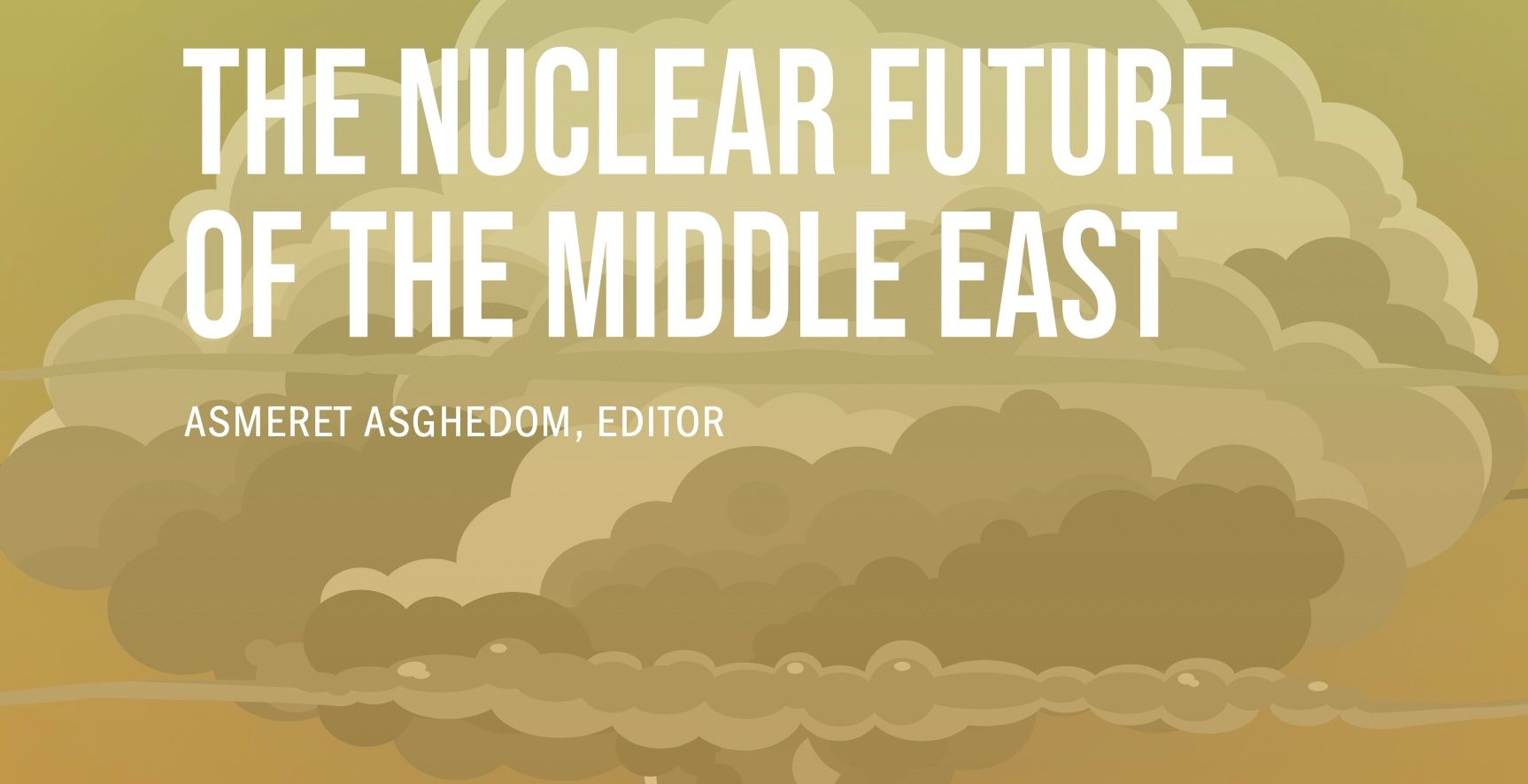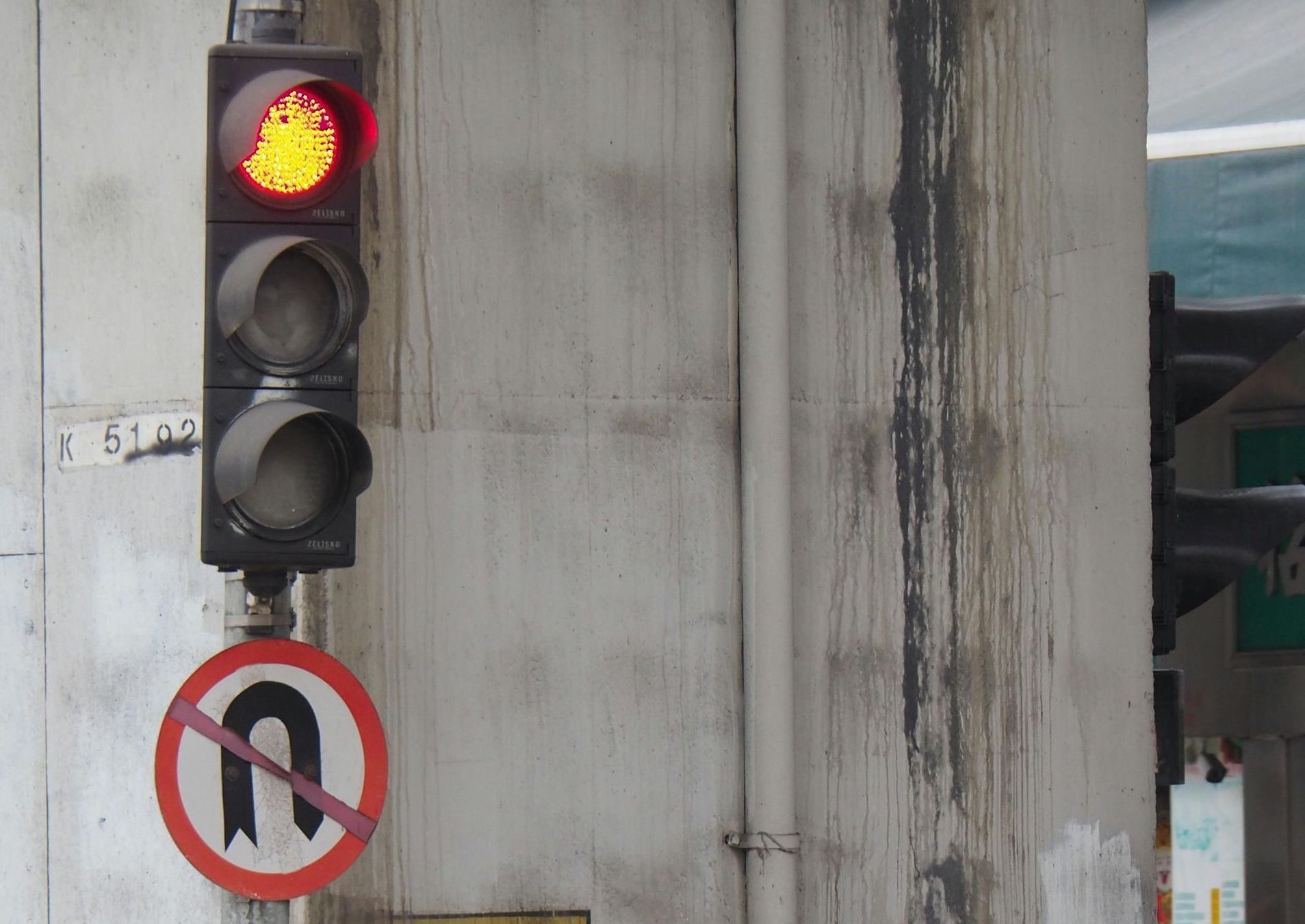Challenges Facing an Iran Nuclear Deal
Below is the prepared text upon which Dr. Ford drew in making his informal remarks on April 21, 2025, at the biennial nuclear policy conference held by the Carnegie Endowment for International Peace. You can find a video of the panel discussion here.

Good morning, and thank you for inviting me. Naturally, I can only offer my own personal views here, which won’t necessarily represent those of anybody else. With U.S. and Iranian officials now apparently starting to meet in hopes of perhaps finding a way to reach agreement on the fate of Iran’s nuclear program, however, this is indeed a good time to talk about the prospects for a deal.
Let me start by saying that Carnegie seems to have gotten a good taste of Iran’s negotiating style over the last 24 hours, with Foreign Minister Abbas Araghchi’s disingenuous bait-and-switch game in which he tried to browbeat you into changing your position on the conditions for his participation after the two sides had already come to terms. That kind of thing, I’m afraid, is very much to be expected from Iran – which naturally makes it all the harder to reach a deal with them on anything.
On the whole, it’s safe to say that I’m pretty pessimistic about the likelihood of reaching an Iran nuclear deal … or at least of getting a good one. It’s not that I don’t still hold out at least some hope of a decent diplomatic solution. (Earlier this year, in fact, I published a paper with the Center for Global Security Research at the Lawrence Livermore National Laboratory on how I think we might be able at least to set the best possible conditions for such a negotiation.) But I do think the chances of success at this point are pretty slim.
The Imperative of “Snap-Back”
Diplomacy has a little time in which to work, but not much.
The October 2025 deadline set by the pending expiration of U.N. Security Council Resolution 2231 is crucial here, because once the option of full sanctions “snapback” disappears, U.N. sanctions are likely to be entirely off the table, because the Russians (and perhaps the Chinese) would surely veto any new resolution to impose them, pretty much no matter what Iran actually does.
To my eye, the way to ensure the best possible chance for negotiations is to put Iran in the position of having to negotiate its way out of snapped-back sanctions. It is not to saddle the West with having to undertake the fool’s errand of persuading a veto-paralyzed Security Council to pressure Iran to agree to reasonable terms after the option of unilaterally-triggered sanctions “snap-back” is lost.
Iran’s game in the current diplomacy will therefore naturally continue to try to drag things out – stalling for time and making talks seem not entirely hopeless for just long enough that they get across the October 2025 deadline without somebody pulling that snapback trigger.
To be sure, as I understand it from various discussions with European interlocutors, the Europeans are basically ready to invoke snapback. I fear they will continue to be reluctant to do so, however, unless the Trump Administration convinces them it has a negotiating strategy. If they perceive Washington as being feckless and out of its league in handling the seasoned professional nuclear negotiators on the Iranian side – and if the United States continues to fly solo and send signals of disdain for the help Europe can provide in making negotiations work, most obviously through invoking U.N. sanctions snapback – I fear the Europeans won’t belly up to that bar.
So far, Europe doesn’t seem convinced – not least because U.S. officials have said inconsistent things, most of all by both seeming to suggest that Iran could continue to enrich uranium to 3.67 percent U-235 and subsequently insisting that it give up all enrichment capability. But as long as Europe thinks we lack an actual plan or vision for the way forward other than just saber-rattling with B-2 bombers at Diego Garcia, Europe may drag its feet on snapback. And if in turn the West lets the October 2025 deadline pass without snapback – and Iran thus gets de facto permanent immunity from a full return of U.N. sanctions – we will have squandered what is probably our best negotiating leverage.
Nuclear Restraint?
It’s also worth noting that even if we did get Iran to consider something meaningful, a decent deal would be a much heavier lift today than it was when Brian Hook and I tried in late 2017 and early 2018 to get the Europeans to join us in supporting a proposal to demand that Iran freeze its enrichment capability and stockpile at the low levels then permitted under the JCPOA and limit its aggressive missile development program. From both a technical perspective and a political one, asking Iran to cut back – or, better yet, eliminate – today’s Iranian nuclear infrastructure is obviously more challenging than asking it to limit or eliminate the much smaller one it had back then.
Establishing some kind of passably effective protocol for verifying that Iran is not working on nuclear weaponization would be an additional challenge, since regular safeguards don’t address that problem and the JCPOA’s notably tepid attempt to address that issue was a flop. We’ve known for years that for a country with Iran’s track record of violations and deception – as even IAEA Director-General Mohammed El Baradei (no Iran hawk him!) was forced to admit in 2005 – the inspection provisions of the Additional Protocol are quite inadequate. (Officially speaking, the IAEA doesn’t normally even have jurisdiction to look for weaponization activity at all, at least where fissile material is not involved.) The lamentable fate of the JCPOA’s “Section T” of Annex I of the JPCOA (“Activities Which Could Contribute to the Design and Development of a Nuclear Explosive Device”) shows that if we are to have some kind of no-weaponization verification we’re going to have to get both creative and rather intrusive in the verification department.
Yet precisely to the extent that Iran is permitted to retain any meaningful stockpile of enriched uranium and an enrichment capability with which to bump it up to weapons-grade purity – or it is permitted (God forbid) to resume its efforts to acquire a plutonium-production capability such as its old reactor project at Arak – the dangerous proliferation incentives facing other countries in the region will continue, as also will the dangerous preemption incentives facing Israel. An enduringly pared-back Iranian capability might represent an improvement over how things stand today if such restrictions didn’t evaporate over time as did the restrictions imposed by the JCPOA, but a Middle East still ripe for both nuclear proliferation and military preemption doesn’t sound like much of a solution.
Missiles and Terrorism
To make things more complicated, you should also remember that the nuclear program isn’t the only problem. In the First Trump Administration, after all, we sought to negotiate less provocative and destabilizing behavior from Iran on other fronts as well. Most prominently, this included putting some kind of cap on its ballistic missile program and its sponsorship of terrorist and regional militia groups, both of which featured prominently in Secretary of State Mike Pompeo’s comments at the Heritage Foundation in May 2018 setting out U.S. objectives.
Iran’s ongoing efforts to destabilize the Middle East by supporting terrorist groups and proxy militias – as well as through the activities of the IRGC’s Qods Force – remain a threat today. To be sure, Iran’s regional provocations may represent a somewhat easier target for our negotiators today, now that the Iran-allied Assad regime in Syria has fallen and the Israelis have so successfully dealt grievous blows to Hezbollah and Hamas. In principle, this might make some kind of Iranian restraint somewhat more negotiable, because such restraint would today require less of an Iranian climb-down than it did before. Nevertheless, it’s not clear whether the current U.S. team is actually trying to bring those issues within the scope of the negotiations – or, if so, how.
Moreover, the missile challenge also remains grave – and it’s no longer hypothetical now, either. We’ve seen Iran’s missile program show its teeth over the last couple of years, with multiple direct attacks having been carried out against Israel, and with an escalation in Iranian-supplied missile attacks on international shipping (and on Israel) from the Houthis. U.S. officials have suggested that the current negotiations do need to cover missiles in some way – though they haven’t been at all clear about how – but while this would be excellent indeed, this just emphasizes the point that getting to a good “yes” will be very challenging indeed.
For its part, Iran claims to have flatly ruled out talking about missiles or about terrorism, describing this as a “red line” for them. At the same time, Israel – which reportedly intended to attack Iran’s nuclear facilities already, only to be talked out of it by the Americans in favor of the current negotiating effort – has made clear that both terrorism and missiles must be in such a deal. To say the least, therefore, it’s far from obvious how all this moves forward.
Don’t’ get me wrong. I’m not saying that agreement upon and successful implementation and effective verification of a deal on these various issues is impossible. I do think, however, that it will be harder to get there today than it was when I was last wrestling with those issues in government – and the United States couldn’t get even the Europeans (let alone Iran) to agree on the conceptual framework for a tolerable JCPOA replacement deal even then.
Conclusion
So let me conclude with final comment. My former boss Mike Pompeo made a good point the other day when he observed that if a genuinely good deal with Iran turns out not to be available right now, there may also exist another option that doesn’t necessarily involve war with Iran.
If Iran starts working to weaponize its dangerous stockpile of nuclear material, I fear we might indeed not have any choice but to work with the Israelis to preclude that with military action. But short of Iran provoking a war like that, there is perhaps the option of what I described in 2023 – in the rather different context of North Korea (a country that has already weaponized) – as a “pain box” strategy. Namely, nothing would preclude a coordinated international campaign of ongoing, relentless pressures on Iran that at least somewhat constrain the resources it has available to devote to destabilizing activities, strain the economy and staying power of the ruling regime, and provide Tehran with a continuing incentive to finally get serious about working out some kind of more or less constructive solution.
If Iran really is weaponizing, of course, the “pain box” wouldn’t be a particularly good option, because such a pressure strategy wouldn’t deal with the Iranian threat in any clear or definitive way, just as it certainly hasn’t solved the North Korea nuclear problem either. (Moreover, officially adopting a “mere” pressure strategy in the face of weaponization might in some vague way be taken to represent a quasi-acceptance of Iran’s possession of nuclear weapons, which we should think about very carefully before offering.) Nevertheless, Pompeo is right that such a pressure campaign is, at least, logically available – and it doesn’t involve blowing things up.
Nevertheless, even in order to tee up such a “pain box” strategy, I think we would have to have U.N. sanctions “snap-back” in place. This makes invoking “snap-back” essential to any serious diplomatic approach short of war – which brings me back to my earlier comments about the importance of a sound and clear U.S. negotiating strategy, and of leveraging European assistance.
Accordingly, I wish the U.S. negotiators the greatest success, but we shouldn’t pretend that the odds of such success are very high. I hope we don’t actually need to use those B-2s in any way other than signaling, but perhaps we will.
And we only have a few more months before we find out.
—Christopher Ford








